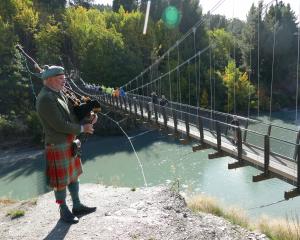
Today, Queenstown Airport Corporation (QAC) published its plans for 2020-22.
The Statement of Intent (SOI) 2020-22 has been eagerly awaited by the resort's community.
Last year, the corporation's bid to extend the airport's noise boundaries became a lightning rod for residents' concerns over unprecedented growth in tourism, while local infrastructure creaked under the strain.
QAC shelved the plans, and is looking first at the potential expansion of Wanaka Airport for a dual-airport model.
And its SOI confirms that position.
"We will need to manage growth to ensure compliance with our noise boundaries, which we expect to reach within the next three years," it reads.
"We have increased the frequency of our noise monitoring programme and are working closely with our airline customers to manage the rate of growth via flight schedules and route planning.
"Over time, capacity will be constrained at Queenstown Airport if the noise boundaries are not expanded, with the expected effects being more limited flight choices and other changes in commercial behaviour.''
The SOI points to the softening of the tourism market, saying there could be some "headwinds on the horizon'' for New Zealand's aviation and tourism sectors.
It states the priority over the next two years will be to increase capacity within the current terminal footprint to "provide for a modest level of growth''.
Work is ongoing master planning for both Queenstown and Wanaka airports - QAC was granted a 100-year lease on Wanaka Airport by Queenstown Lakes District Council (QLDC) in April last year.
QLDC owns 75.01% of the shares in QAC, with the rest owned by Auckland Airport. The SOI was made to QLDC and will be heard by councillors at Thursday's full council meeting.
It states: "Ultimately, we aim to bring the long-term planning for Queenstown and Wanaka airports together to present a dual-airport proposition which will support and provide value to the communities we serve.''
But that position has been met with concern over the hill in Wanaka, both from the community and business sector.
Expansion of Wanaka Airport was supported by 52% of the members of the Wanaka Chamber of Commerce who took part in a survey late last year. Some 72% favoured the return of domestic flights to Wanaka Airport, and several said they would prefer smaller, non-jet aircraft. The top concern was it would "change the fabric of the Wanaka community''.
The SOI also gives something of a nod towards calls for Invercargill and Dunedin airports to share the load regionally, although ''operations" are second in a list of "opportunities''.
"We will also continue to work closely with the airports in the broader region, including Invercargill and Dunedin airports, to explore joint opportunities in the areas of health, safety and security, operations, sustainability, and supporting strategic regional tourism initiatives.''
The proposed district plan variation would have enabled 41,600 flights to land in Queenstown by 2045 -- double the 21,000 movements allowed for by the present inner and outer noise boundaries. It would have allowed a more-than-doubling of annual passenger movements from 2.05 million to about 5.1 million.
The airport put its expansion plans on hold in October after strong opposition from 94% of the community and businesses who responded to consultation.
The SOI adds: "While we continue to shape our long-term plans, we are conscious that we need to manage future airport growth in a sustainable manner.
"Our ongoing work with, and the support of, the communities across the Southern Lakes region is underpinned by a mindfulness of our social licence to operate and a commitment to social, economic and environmental sustainability.''
QAC's land, land improvements and buildings, including the 137.6ha Queenstown Airport aerodrome and Wanaka Airport's 282.4ha is valued at $332 million, while the QAC's estimated enterprise value is within the range of $466m to $483m.












